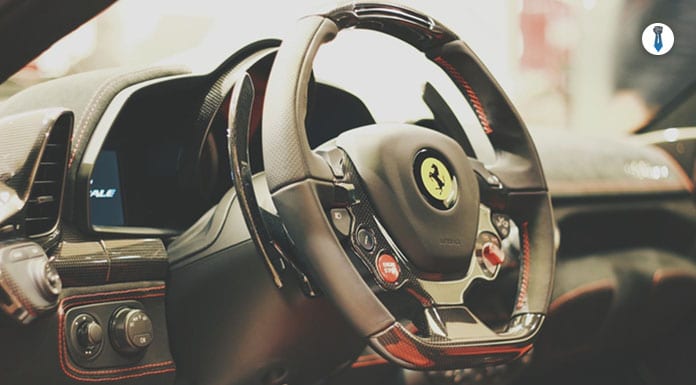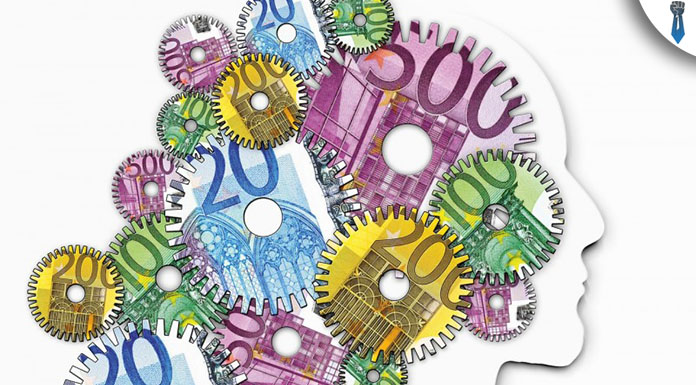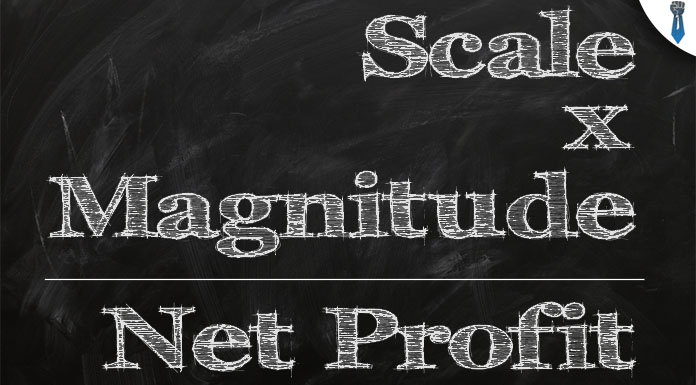“For how long are you going to work like a maniac?” she asked.
“You put all these hours into working and you’ve forgotten how it is to ‘live’ your life.” She continued.
“Are you ever going to relax a bit? When are you going to take some proper vacation like everybody else? It’s been years since the last time you went for wild Y.O.L.O vacations”, she concluded the interrogation.
***
Ahhh, vacations, sounds like a distant dream indeed. It’s been a few years since the last time I went for some unwary vacations.
To be honest, it’s been a long time since I was carefree. But I don’t really mind that, or the fact that I haven’t taken some time off for quite some time now.
Because I have a plan. To become financially free as soon as possible.
What is financial freedom?
If you’ve been around to this blog for a long time, I bet you’re familiar with these terms, net worth, wealth, financial freedom, passive income, etc.
Unfortunately for most people out there, these terms are completely unknown. They might have heard (and crave for) money, luxuries, vacations, supercars, etc., but they’ve never really believed they can acquire any of these, so they sleep *relaxed* and happy miserable every night.
I had this conversation a few days ago, with a friendly couple, when I was trying to explain what it means to be financially free.
I tried to pass along the idea, that working like a slave for 50 years and then die old and sick before you make anything really significant in your life isn’t a nice plan, although it’s a highly common (and acceptable) one in our modern societies.
I don’t mind the fact to work SO many hours for a few years if I am to enjoy all the nice things this life has to offer a few years later. In any case, each person has a different definition of what hard work really is.
Some folks work in factories for 12 hours a day, they earn $400 a month and they have zero chance of leveraging that in the future. Some others have their own shops where they work again for 12 hours a day, making $1k to $2k per month after Uncle Sam takes a nice cut (again with zero chances of this business growing due to scalability or magnitude reasons).
And then finally there are people like me, who put around 1-2 hours per day on the specific business venture and they make more than $3.000 per month working from home – with huge scalability potential.
Besides that, they have lot’s of extra time to put into self-education, other business ventures or any other productive task they feel like.
The reason I’m telling you all these, isn’t to get a “bravo” from you, but to make it clear that you should want to belong in the third category of individuals. The ones who although work hard, they have a solid financial freedom goal in mind.
So, according to my definition:
Someone is financially free, when his total assets can passively support his current lifestyle for the rest of his life.
Too complicated? Let’s break this down a bit.
Keyword above is “passive.” There are many people that make more from their day jobs than they spend each month (which admittedly is remarkable), but the really tricky part is to achieve the above equation and on the same time, remove yourself out of it.
To really become financially free, your passive income streams (these are income streams that require none or very little of your presence), and your total assets, should generate more money than you need in order to live your lifestyle, pay your bills, etc.
Of course, depending on the individual, the monthly expenses can vary greatly, but like in previous occasions, I don’t want to waste my time with average ambitions.
Strictly technically, someone who passively earns $2k per month and spends $1k per month, is theoretically free, since in this way he could essentially support his lifestyle forever.
When the numbers are that low though, things can be tricky. If your net income is $1k per month, the rhythm in which you could accumulate some substantial wealth (to buy a car, a house, build a business, or have an expensive surgery) could take all your life – literally.
So instead of feeling great at $2k of passive income per month, you should definitely make a realistic financial freedom plan.
How to design your financial freedom goal
Starting from the equation above, let’s break this thing into pieces. All you need to have is a simple spreadsheet like this one here, where we are going to put all our assets, income streams and expenses (liabilities).
Step #1: Note down all your assets
So let’s consider the above table, taken out of my personal financial freedom goal planning, to begin with.
An asset can be considered anything that can be liquidated (or is already in liquid form), like your house, your car, household items, works of art like paintings, rare collections of anything, cash, etc.
| Assets | Total | |
| Car | 1.000€ | 1.000€ |
| House | 0€ | 0€ |
| Other Real Estate | 0€ | 0€ |
| Household Items | 0€ | 0€ |
| Jewelry | 0€ | 0€ |
| Savings | 5.000€ | 5.000€ |
| Investable Capital | 0€ | 0€ |
Some assets are more easily to liquidate like a car maybe, while some others are a bit more difficult (like an extra rare statue of marble). But nonetheless, we should consider all these assets and count them on the plus (+) side.
As you can see at this point, I currently have very few assets, like a very cheap car and a few thousand dollars in savings. Nothing to brag about, but we should put everything in our spreadsheet for more accurate results.
Step #2: Calculate your target monthly expenses
Watch this step very much. Note the word “target monthly expenses.” You won’t be in a position to calculate your “exit point” unless you can accurately estimate how much money you are going to need for your “dream life.”
You don’t have to be frugal here, it’s your financially free life after all. Be generous and aim high.
| Liabilities | Monthly | Annually |
| Car | 2.000€ | 24.000€ |
| Transportation | 500€ | 6.000€ |
| Clothing | 200€ | 2.400€ |
| House (Rent) | 12.000€ | 144.000€ |
| House (Mortgage) | 0€ | 0€ |
| Nightlife | 500€ | 6.000€ |
| Food | 500€ | 6.000€ |
| Traveling | 1.000€ | 12.000€ |
| Luxuries | 1.000€ | 12.000€ |
| Credit Card | 0€ | 0€ |
Take some wild but educated guesses as to what is your dream life gonna cost. This might be a bit tricky but try to think in rent, leasing or mortgage terms instead of owning the damn thing.
So for example, if I want to buy a Ferrari that costs $100.000, I know that I can have own on a lease/rent for about $2.000 per month. I know it’s not super accurate, but in the long run, it won’t really matter if your dream car will cost you $2k per month or $2.5. I’ll explain why later.
You want a sports car, a nice mountain cottage, some wild nightlife (drugs not included), food, traveling or some other luxuries maybe?
Here’s the correct section to put all this information. All these expenses will count as your target monthly liabilities. This is the maximum amount of money you are going to need in order to live, your dream lifestyle. This is your (-) side.
Again take a moment to think about it, and note as many of them down like I have.
12.000 euros per month for a house? WTF dude?
Step #3: Active and passive monthly income
Your next step is to include all your streams of income in the spreadsheet. Active or passive you’ll have to put everything in there.
This way you’ll be able to tell how close you are to the freedom line.
| Active Income | Monthly | Annually |
| KDP | 4.000€ | 48.000€ |
| Project Be Best | 400€ | 4.800€ |
| Other Business Units | 200€ | 2.400€ |
| Passive Income | Monthly | Annually |
| Real Estate | 0€ | 0€ |
| Bonds | 0€ | 0€ |
| Stocks | 0€ | 0€ |
| ROI | 10% |
I would advise you to start with your current income streams and not the projected ones because, in this way, you will be able to see in the end how many months/years it’ll take you to achieve financial freedom with your current rhythm.
As you can see on the table above my current income status is the one depicted above. Let’s see how this ends.
Step #4: Final calculations
After you have included everything in the spreadsheet, you let it cook out the results for you.
If you have set everything up nicely, and you have also input an estimated annual return on your investment, you’re pretty much done. For the specific example, I have put an estimated yearly return of 10% on my investment.
Let’s see the final results:
| Total | Monthly | Annually |
| Assets | 6.000€ | |
| Liabilities | 17.700€ | 212.400€ |
| Active Income | 4.600€ | 55.200€ |
| Passive Income | 0€ | 0€ |
| Net Income | -13.100€ | -157.200€ |
| Wealth (in time) | 0 | 0,0 |
| Target Investable Capital | 2.124.000€ | |
| Remaining Inves. Capital | 2.124.000€ | |
| Time to Go | -162 | -13,5 |
Things don’t look that promising huh?
Fear not my hearties! This is a dream plan, meaning that if it was that easy to achieve, it would be really boring.
Let me explain what we see here.
- The total assets are a measly 6k euros.
- My target monthly expenses (liabilities) are around 18k euros.
- At the moment I earn about 4k euros per month. To be completely honest, KDP income is closer to passive than to active, but it’s not 100% set and forget so to be fair I have put it in the active income box. As a side note according to my estimations, if I didn’t spend a single hour the whole month on KDP, I estimate I would only lose maybe 10% to 20% of that monthly income, but this belongs to another discussion.
- My “target” net income is (-13k) at this moment, meaning that I earn 13k euros less each month than what I should have in order to live my dream lifestyle.
- Wealth, which is measured in time (months/years) is again zero, meaning that if I cut my income streams completely tomorrow, considering my dream lifestyle, I could only survive for like…well…zero years, zero months and zero days…
Considering everything above and a hypothetical return on my investment of 10% annually, in order to be able to spend 18k euros each month without having to work at all, I would need to have about 2.1 million euros in investable capital.
In that way, no matter what the actual investment portfolio is, I should aim for it to be about 2 million euros.
The old but gold, “have your money work for you.” Not the other way around.
So now that we have seen, how a financial freedom plan works out, it should be a bit more clear, why I don’t mind if I don’t go for a vacation at the moment.
Let me know what your financial freedom goal is in the comments below.


